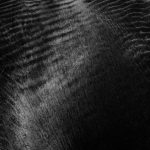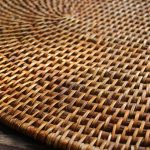If you’re looking for alternatives to geotextile fabric, you can use natural fiber mats made from coir, jute, or burlap, which protect soil while allowing water flow and biodegrade over time. Coconut coir rolls work well for soil stabilization and drainage too. Cardboard and newspaper layers block weeds naturally and enrich the soil as they break down. Mulching with straw or hay also helps reduce erosion and retain moisture. Keep exploring to discover more eco-friendly options and how best to use them.
Table of Contents
Key Takeaways
- Natural fiber mats like coir, jute, or hemp stabilize soil while allowing water flow and biodegrade over time.
- Burlap fabric prevents soil erosion, supports plant growth, and gradually breaks down without harmful residues.
- Coconut coir rolls reduce runoff, filter water, conform to slopes, and enrich soil as they decompose naturally.
- Cardboard and newspaper sheets block weeds effectively, are biodegradable, inexpensive, and promote soil health when decomposed.
- Straw or hay mulch retains moisture, suppresses weeds, reduces erosion, and improves soil structure when applied properly.
Natural Fiber Mats for Soil Stabilization
While geotextile fabrics have been popular for soil stabilization, natural fiber mats offer an eco-friendly alternative that you might find effective.
These mats, made from materials like coir, jute, or hemp, help protect soil from erosion while allowing water and air to pass through. You’ll appreciate that natural fiber mats biodegrade over time, enriching the soil instead of leaving behind synthetic waste.
They’re especially useful on slopes or disturbed areas where vegetation needs support to establish. Installing them is straightforward: lay the mat over the soil and secure it with stakes or pins.
Unlike synthetic fabrics, these mats don’t require removal once the vegetation takes hold. If you want a sustainable, cost-effective solution that works harmoniously with the environment, natural fiber mats are definitely worth considering.
Burlap as an Erosion Control Alternative
You’ll find burlap offers excellent erosion control by allowing water to pass through while protecting soil from runoff.
It’s biodegradable, so it won’t harm the environment or leave behind synthetic waste.
Using burlap means you’re choosing a natural, eco-friendly option that supports plant growth and soil health.
Burlap Benefits for Erosion
Because burlap is a natural, biodegradable material, it offers a sustainable alternative for controlling erosion on your property.
You’ll find burlap excels at stabilizing soil on slopes and banks, reducing runoff, and preventing sediment loss. Its porous texture allows water to seep through slowly, minimizing erosion while keeping soil in place.
Plus, burlap supports seed germination by protecting young plants from wind and heavy rains. You can easily cut and shape it to fit your landscape’s contours, making installation straightforward.
Over time, burlap breaks down, enriching the soil without leaving harmful residues. If you want an effective, eco-friendly way to combat erosion, burlap’s durability and natural properties make it a smart choice that works with your land rather than against it.
Environmental Impact of Burlap
Although synthetic materials often dominate erosion control, burlap offers an environmentally friendly alternative that you can feel good about using. Made from natural jute fibers, burlap is biodegradable, so it breaks down over time without leaving harmful residues.
This means you won’t have to worry about plastic pollution or long-term waste when using burlap on your site. Plus, burlap supports soil health by allowing air and water to pass through, encouraging beneficial microbial activity.
It also decomposes into organic matter, enriching the soil as it breaks down. While burlap may not last as long as synthetic fabrics, its low environmental impact makes it a smart choice if you want to protect the land and reduce your ecological footprint during erosion control projects.
Coconut Coir Rolls for Drainage and Support
You’ll find coconut coir rolls great for keeping soil in place while letting water flow through efficiently.
They naturally filter water, preventing sediment buildup and promoting healthy drainage.
Using them helps stabilize slopes and supports plant growth without synthetic materials.
Benefits for Soil Retention
When you choose coconut coir rolls for soil retention, you tap into a natural solution that excels at both drainage and support. These rolls help stabilize soil effectively, preventing erosion while allowing water to flow through. Here’s why they’re a smart choice:
- Strong yet flexible – they conform to slopes and uneven terrain, holding soil in place.
- Biodegradable – they break down naturally, enriching the soil over time without leaving harmful residues.
- Promote vegetation growth – their fibrous texture encourages roots to take hold, further stabilizing the area.
- Reduce runoff velocity – by slowing water flow, they minimize soil displacement during heavy rains.
With coconut coir rolls, you get a sustainable, efficient way to keep your soil where it belongs.
Water Filtration Capabilities
Coconut coir rolls don’t just hold soil in place—they also excel at filtering water as it moves through the ground. When you install these rolls, they act like a natural sieve, trapping sediment while allowing water to flow freely. This prevents clogging and reduces erosion, especially on slopes or around drainage areas.
Unlike synthetic fabrics, coir’s fibrous structure provides excellent permeability without compromising strength. You’ll find that water drainage improves, helping prevent waterlogging and promoting healthier plant roots.
Plus, because coir is biodegradable, it gradually integrates into the soil, enhancing its texture and water retention over time. If you want a sustainable, effective solution for both soil support and water filtration, coconut coir rolls are a smart alternative to traditional geotextile fabric.
Straw and Hay Mulching Techniques
Although straw and hay have long been traditional mulching materials, they still offer effective solutions for soil protection and moisture retention. You can use them to reduce erosion, suppress weeds, and improve soil health naturally.
Straw and hay remain valuable mulches for protecting soil, retaining moisture, and naturally improving garden health.
Here’s how to apply them effectively:
- Spread a 2-3 inch layer evenly over your soil surface.
- Water the mulch after application to help it settle and prevent blowing away.
- Replace or replenish the mulch as it decomposes to maintain coverage.
- Avoid using hay with weed seeds to prevent unwanted growth.
Recycled Plastic Mesh for Reinforcement
While organic mulches like straw and hay help protect soil naturally, you might need a more durable option for long-term reinforcement.
Recycled plastic mesh offers a strong, eco-friendly solution that’s resistant to rot and breakdown. You can use this mesh to stabilize slopes, control erosion, or support garden beds without worrying about frequent replacement.
Its flexibility allows it to conform to uneven surfaces, and its open weave promotes water drainage, preventing pooling. Plus, since it’s made from recycled materials, you’re reducing waste while improving your soil’s stability.
When installing, secure the mesh firmly to avoid shifting, and overlap sections for continuous coverage. This option gives you a tough, low-maintenance alternative that stands up to weather and time better than many natural fabrics.
Landscape Fabric Made From Synthetic Materials
Synthetic landscape fabric offers a reliable way to control weeds and manage soil moisture in your garden or landscaping project. Made from durable polypropylene or polyester, this fabric creates a barrier that blocks weed growth while allowing water and air to pass through.
Here’s why you might choose it:
- Weed Control: Effectively suppresses weeds without chemicals.
- Moisture Retention: Helps keep soil hydrated, reducing watering needs.
- Durability: Resists tearing and decomposition, lasting several seasons.
- Easy Installation: Lightweight and simple to cut for custom fits.
Using synthetic landscape fabric saves time and effort in maintenance, making it a practical alternative to traditional geotextile materials.
Just remember to secure it properly to prevent shifting and guarantee its effectiveness.
Cardboard and Newspaper Layers for Weed Control
Using cardboard and newspaper layers is an effective, eco-friendly way to control weeds in your garden. You can simply lay down flattened cardboard or several sheets of newspaper over the soil where you want to prevent weed growth. These materials block sunlight, stopping weed seeds from sprouting.
Plus, they break down naturally, enriching your soil over time. To keep them in place, wet the layers thoroughly and cover them with mulch or compost. Avoid glossy or colored print newspapers, as their inks might contain harmful chemicals.
Cardboard and newspaper are inexpensive, biodegradable, and readily available, making them excellent alternatives to synthetic geotextile fabrics. Just remember to overlap the edges well to prevent any gaps where weeds might sneak through.
This method saves you money and supports sustainable gardening practices.
Frequently Asked Questions
How Long Do Alternative Materials Last Compared to Geotextile Fabric?
Alternative materials often last shorter than geotextile fabric, which can endure decades. While some alternatives degrade in a few years, geotextile’s durability means you won’t replace it as often, saving you time and effort.
Are These Alternatives Safe for Use Around Edible Plants?
You’ll find many alternatives like burlap or coconut fiber safe around edible plants since they’re natural and biodegradable. Just avoid synthetic options with chemicals that might leach into your soil and affect your crops’ health.
Can These Substitutes Support Heavy Construction Loads?
You might think natural fibers can’t handle heavy loads, but some alternatives like woven polypropylene do. They’re designed to support construction pressures, so you can confidently use them without compromising your project’s stability or safety.
How Do These Materials Affect Soil Ph and Nutrient Levels?
You’ll find that some alternatives can slightly alter soil pH or nutrient levels, especially organic ones breaking down. Synthetic options usually don’t affect soil chemistry, so choose based on how much soil impact you’re willing to tolerate.
What Is the Cost Comparison Between Geotextile Fabric and Alternatives?
You’ll find geotextile fabric costs more upfront, but alternatives like landscape fabric or burlap are cheaper. However, these may wear out faster, so you might spend more replacing them over time. Choose based on your budget and needs.
- Can You Iron Suede Fabric? How to Do It Safely - July 12, 2025
- Dyeing Faux Suede Fabric: Tips for Success - July 12, 2025
- How to Clean Suede Furniture Fabric at Home - July 12, 2025







